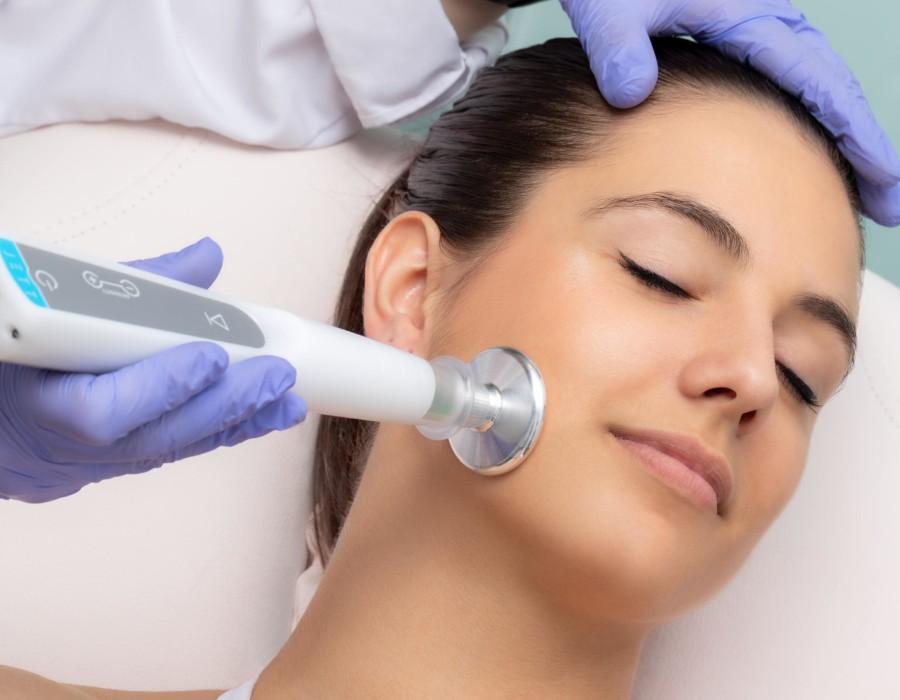Introduction to Laser Skin Tightening
Laser Skin Tightening is a minimally invasive cosmetic procedure that aims to rejuvenate the skin by using targeted laser energy to stimulate collagen production. This treatment is popular for its ability to reduce the appearance of wrinkles and sagging skin, resulting in a firmer and more youthful appearance.
How Laser Skin Tightening Works
Laser skin tightening works by delivering laser energy into the deeper layers of the skin. This energy heats the collagen under the skin's surface, causing it to contract and tighten. Additionally, the heat stimulates the production of new collagen, which further enhances the skin's firmness and elasticity over time.
Expected Downtime After Laser Skin Tightening
Immediate Post-Treatment Effects
Immediately after the procedure, patients may experience mild redness and swelling in the treated area. This is a normal response and typically subsides within a few hours to a couple of days. In some cases, patients might also notice a slight stinging sensation similar to a sunburn.
Short-Term Recovery
In the first week following laser skin tightening, the skin may feel tighter and slightly itchy. It's important to avoid scratching or rubbing the treated area to prevent irritation. Patients are advised to keep the skin moisturized and to avoid exposure to direct sunlight, as the skin is more sensitive during this period.
Long-Term Recovery
Within two weeks, most patients can resume their normal activities without noticeable side effects. The skin continues to produce new collagen for several months, resulting in ongoing improvements in skin tightness and texture. Patients are encouraged to follow a consistent skincare routine and protect their skin from excessive sun exposure to maintain the results.
Factors Influencing Downtime
Individual Skin Type and Condition
The recovery time can vary depending on an individual's skin type and condition. Those with sensitive skin may experience longer periods of redness and swelling, while those with more resilient skin may recover faster.
Treatment Area
The size and location of the treatment area also play a significant role in determining downtime. Larger areas or areas with thinner skin, such as around the eyes, may require a longer recovery period compared to smaller or thicker-skinned areas.
Practitioner’s Technique
The skill and experience of the practitioner performing the laser treatment can greatly influence the downtime. An experienced practitioner can optimize the laser settings to achieve the desired results while minimizing adverse effects and recovery time.
Tips for Minimizing Downtime
Pre-Treatment Care
- Consultation and Skin Assessment: Undergo a thorough consultation and skin assessment to determine the most appropriate treatment plan.
- Avoid Sun Exposure: Limit sun exposure and use sunscreen to protect the skin in the weeks leading up to the treatment.
- Hydrate: Keep the skin well-hydrated by drinking plenty of water and using a good moisturizer.
Post-Treatment Care
- Follow Aftercare Instructions: Adhere strictly to the aftercare instructions the practitioner provides.
- Use Gentle Skincare Products: Avoid harsh skincare products and use gentle, soothing formulations.
- Protect the Skin: Use a broad-spectrum sunscreen with a high SPF to protect the treated area from UV damage.
When to Seek Medical Attention
While laser skin tightening is generally safe, it’s crucial to be aware of signs that may indicate complications. Seek medical attention if you experience severe pain, prolonged swelling or redness, blistering, or signs of infection such as pus or fever.
Conclusion
Understanding the downtime after Laser Skin Tightening in Riyadh is essential for achieving optimal results and ensuring a smooth recovery. By following the recommended pre- and post-treatment care guidelines and being mindful of the factors that influence recovery, patients can enjoy the benefits of firmer, more youthful-looking skin with minimal disruption to their daily lives.






Comments